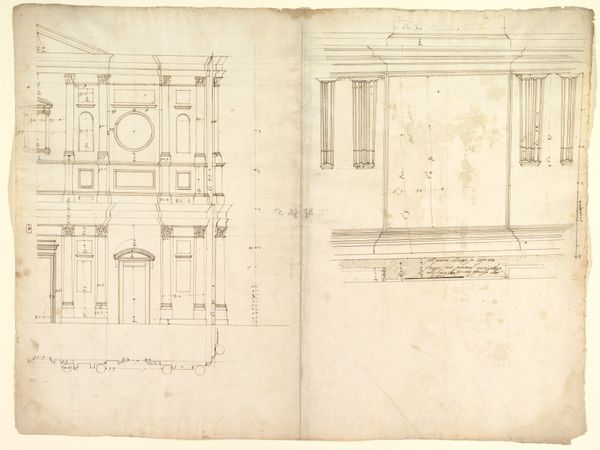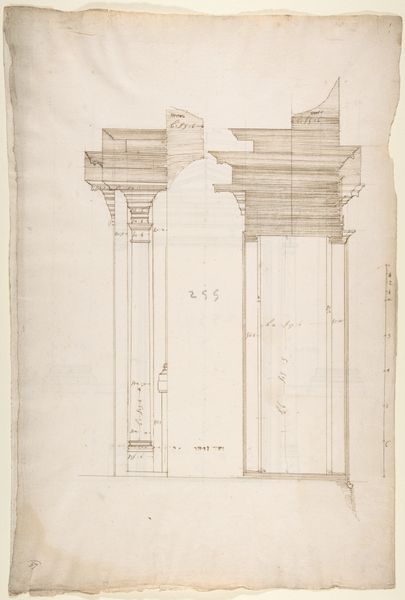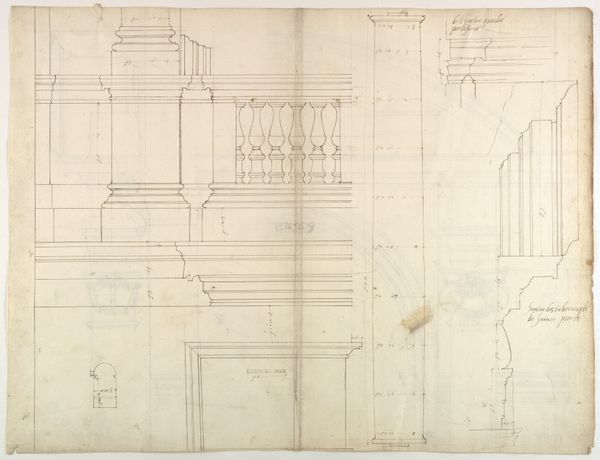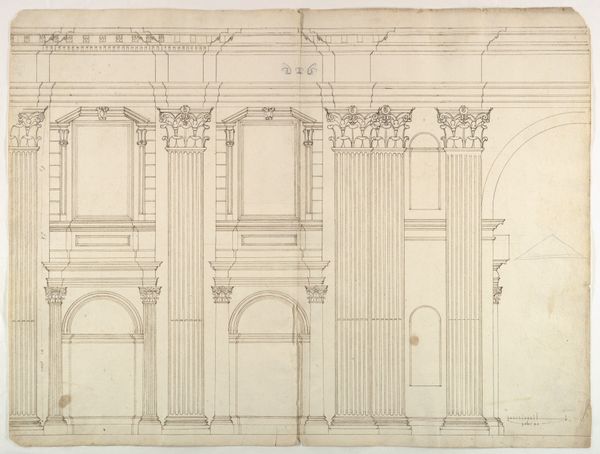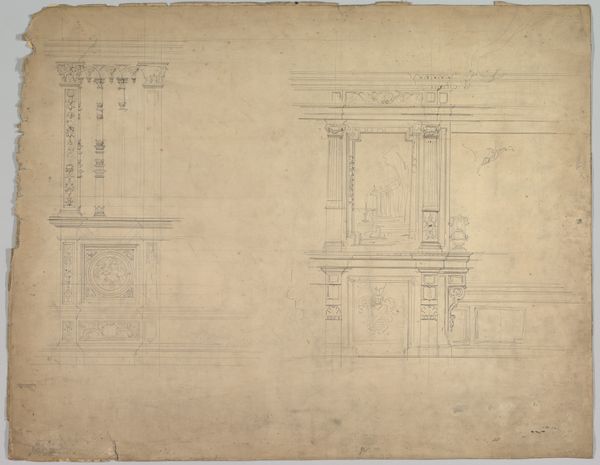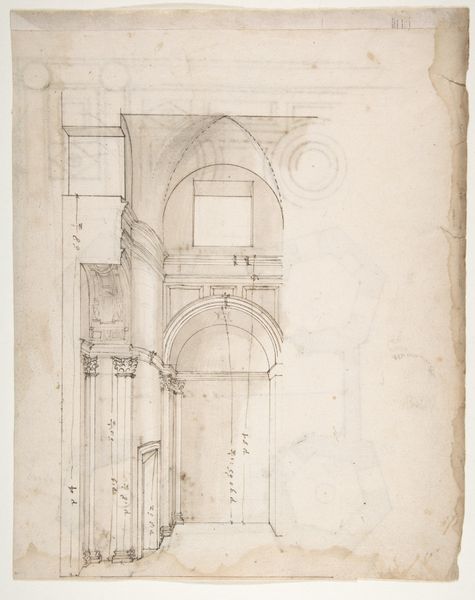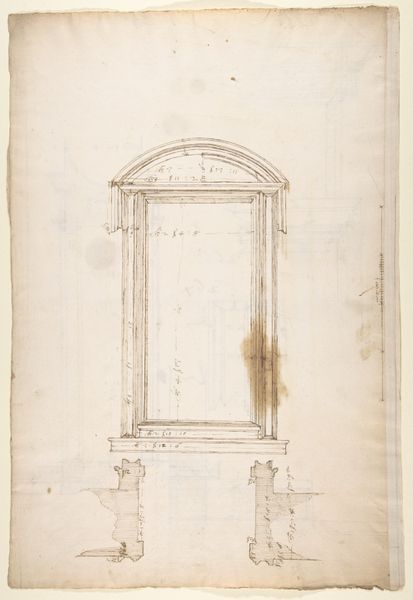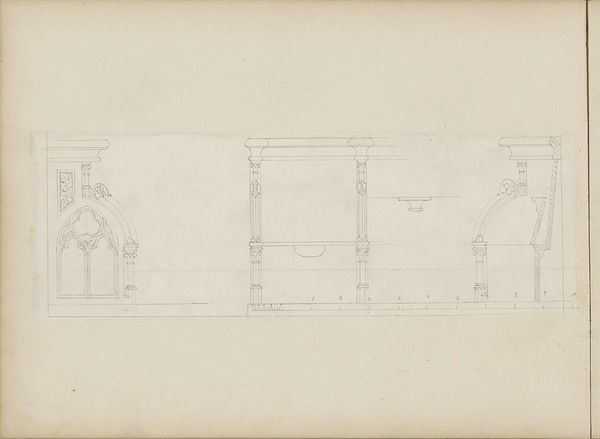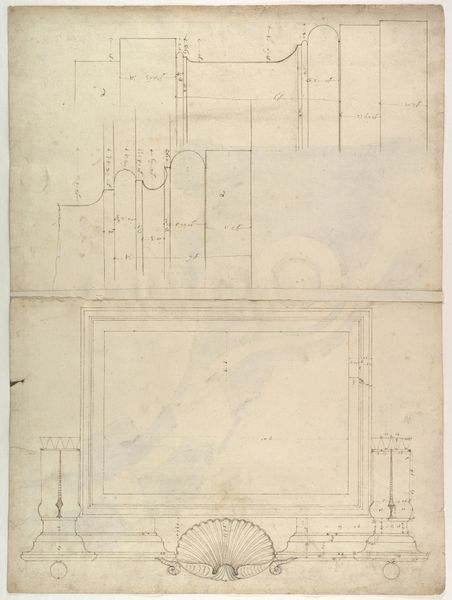
San Lorenzo, Library, Ricetto, upper window, elevation; niche,elevation, plan, and section (recto) San Lorenzo, Library, Ricetto, niche, details; upper window, details, elevation (verso) 1500 - 1560
0:00
0:00
drawing, print, architecture
#
drawing
# print
#
11_renaissance
#
geometric
#
italian-renaissance
#
architecture
Dimensions: sheet: 17 1/8 x 22 11/16 in. (43.5 x 57.7 cm)
Copyright: Public Domain
Curator: Here we have a drawing and print titled "San Lorenzo, Library, Ricetto, upper window, elevation; niche,elevation, plan, and section (recto) San Lorenzo, Library, Ricetto, niche, details; upper window, details, elevation (verso)". It's an architectural study dating back to sometime between 1500 and 1560. Editor: My first impression is one of precision and planned grandeur. The drawing emphasizes clarity and symmetry. There is a kind of starkness that really highlights the intention of formal space. Curator: Precisely! Consider that the Bibliotheca Laurentiana, for which these drawings were likely created, was itself a bold statement by the Medici family—a family that understood the potency of cultural patronage as a form of political messaging. The architecture of knowledge becomes inextricably linked to their power. Editor: The drawing definitely echoes the ideals of Renaissance classicism. The emphasis on geometric shapes—the circles, rectangles, and precise lines—creates a sense of order, suggesting humanist faith in reason and harmony. You also see the materiality emphasized in details like the stone work; a sort of weight is added to the vertical rise of these structures. Curator: And this is where the importance of architectural drawings comes into play. These renderings helped shape the design. These structures were far from politically neutral. They embodied ideals, they provided jobs, they transformed the physical landscape—all tangible assertions of power. The access, function, and appearance of these library spaces was meant to communicate values of the patrons as well. Editor: Absolutely. There’s an undeniable rigor at play here. Looking at it, I am especially taken by the light pencil lines of the designs. I'm especially struck by the formal constraints imposed on even subtle flourishes of the architecture. The overall impression speaks to a controlled, almost self-conscious attempt at perfection. Curator: Seeing these original drawings allows us a deeper appreciation of the social history of these projects and how wealthy benefactors and prominent architects would change our landscapes. Editor: Yes, it's a fascinating study in how aesthetic choices serve functions, reflect underlying cultural values, and the pursuit of an ordered and controlled built environment.
Comments
No comments
Be the first to comment and join the conversation on the ultimate creative platform.
